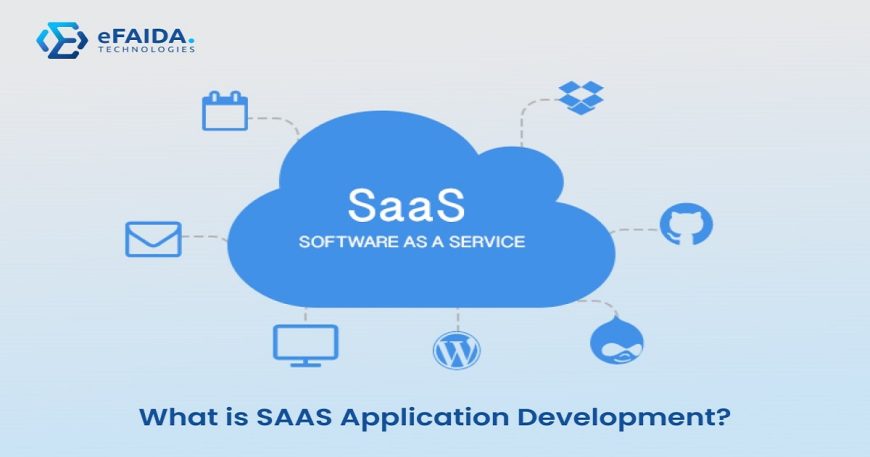Introduction
In the dawning digital age, Software as a Service(SAAS)has transformed the way we access software for both companies and consumers. SAAS products use the cloud as a platform that comprises the application and is owned and managed by the service provider. The cloud application development SAS encompasses developing the cloud-ready solutions which later on are customized according to the specific needs of the clients. This briefing will take a closer look at the subtleties of SAAS product manufacture, the upsides, downsides, and the sequential steps required in the process.
SAAS Application Development Process
Understanding the Market Needs
Research and analyze market trends, user desires, and competitors’ products to find vacancies or rooms for improvement.
Conceptualization and Planning
Create a comprehensive strategy consisting of a specific list of the application’s functions, capabilities, and architecture, which would be integrated with the vision of the company.
Design and Prototyping
Create wireframes and prototypes that will illustrate how the application is structured, the user interface (UI), and the UX to the users.
Development
Applying agile methodologies allows us to work in phases, where we first deliver the most pivotal features and integrate the feedback throughout the development process.
Testing and Quality Assurance(QA)
Manual testing is the key here such as connecting to the application, installing, and looking for any bugs, crashes, and slow response time.
Deployment
Set up the application to run on the cloud environment while allowing the provision of robust scalability, security, and smooth interoperability with the incumbent systems.
Monitoring and Maintenance
Use these constant monitoring, user feedback, and market-related trends, and update the app accordingly to satisfy the evolving requirements.

Benefits of SAAS Application Development
Cost-Effectiveness: SAAS does away with the initial infrastructure expense and, this lowers the entry allowing businesses of any magnitude to adjust.
Scalability: The applications of SAAS are scalable, thus they can handle the growing number of their user base and do well in critical situations.
Accessibility: Since SAAS applications can be accessed from web browsers, users do not have to install software on every device they use to use the products. This is convenient and ensures flexibility in usability.
Automatic Updates: The SAAS providers figured out all the software updates and maintenance so they can send the users the latest features and security patches whenever they are available.
Challenges of SAAS Application Development
Security Concerns: According to the cloud storage of verifier’s sensitive data results in soaring cyber risks that call for the necessity of occupation with them at the proper level.
Integration Complexity: Interconnecting SAAS apps with established systems may be hard, thus the implementation necessitates a cautious approach that entails taking considerations and proper execution.
Data Privacy: The GDPR and CCPA are two of the most important data protection regulations examples that should be conformed with for the reason of assuring the personal data of the user.
Conclusion
SAAS application development is a vital and helpful process in the IT industry that provides various opportunities to businesses and consumers. Knowledge of the market needs, development process adherence to structure, and issues addressed appropriately allows businesses to come with star success in SaaS products that are effective in digitization.
FAQs (Frequently Asked Questions)
Q1. What is the difference between SAAS and traditional software development?
We differentiate traditional software and SaaS in two perspectives, in the first one we are talking about the purchase model as the first one is installed on individual devices and the second is accessed over the Internet, and in the second, it is the basis of subscription
Q2. How does SAAS benefit businesses?
SAAS shrinks initial investments, levels the field for any-sized entity, and distributes automatic updates, which makes it agile, easily scalable, and a choice of preference for businesses.
Q3. Is SAAS suitable for all types of businesses?
SAAS model is convenient for businesses of all scales the same way, what matters though, is the size of the budget, scalability needs, and data security standards which predetermine the suitability for a particular business.
Q4. What are some popular SAAS applications?
SAAS Tools such as Salesforce, Google Workspace, and Microsoft 365 get wide acceptance.
Q5. How can businesses ensure the security of their SAAS applications?
Companies should use stringent authentication procedures, data encryption, and frequent security audits as a defense against fraud in their SAAS environment.
Q6. What trends are shaping the future of SAAS application development?
The example of AI, ML, and the IoT is a running trend that propels the generation of Amazing Software Application Development solutions, bringing new business opportunities.




